Using your shop’s Cost of Doing Business (CODB) as a baseline for labor rates.

Recently I had occasion to watch the following video from Dorman Training Manager (and ASE Master Tech) Pete Meier:
I was fortunate enough to be there live and talk to Pete after he was done shooting, and this video really stuck with me. If you think about it, the habits that are most deeply ingrained are the ones we’ve done the longest, and for most of us, we started on the lube rack and the tire machine. Some of you will remember flipping tires on a Coats Super Star as I once did, and you oldtimers are probably grinning: the game has changed.
If you’re a more advanced technician, you may perform tire work rarely or never at all. Here are a few tips that bear remembering (or maybe learning for the first time).
Of course you know tires get lubed during install. Anyone who’s tried mounting a tire sans lubricant has quickly realized his folly. But some of the best practices we used to ignore now have some teeth. Be honest: do you always apply heavy lube when dismounting a tire? In the olden days with flexy-flyer sidewalls you could get away without it, but as aspect ratios have turned tires into giant rubber bands, failure to get sloppy with the lube brush greatly increases the likelihood of damaging a bead package. Adding insult to injury, these tires most likely to suffer injury are the costliest ones to replace—30-series aspect ratio tires are painfully expensive to replace should you damage one.
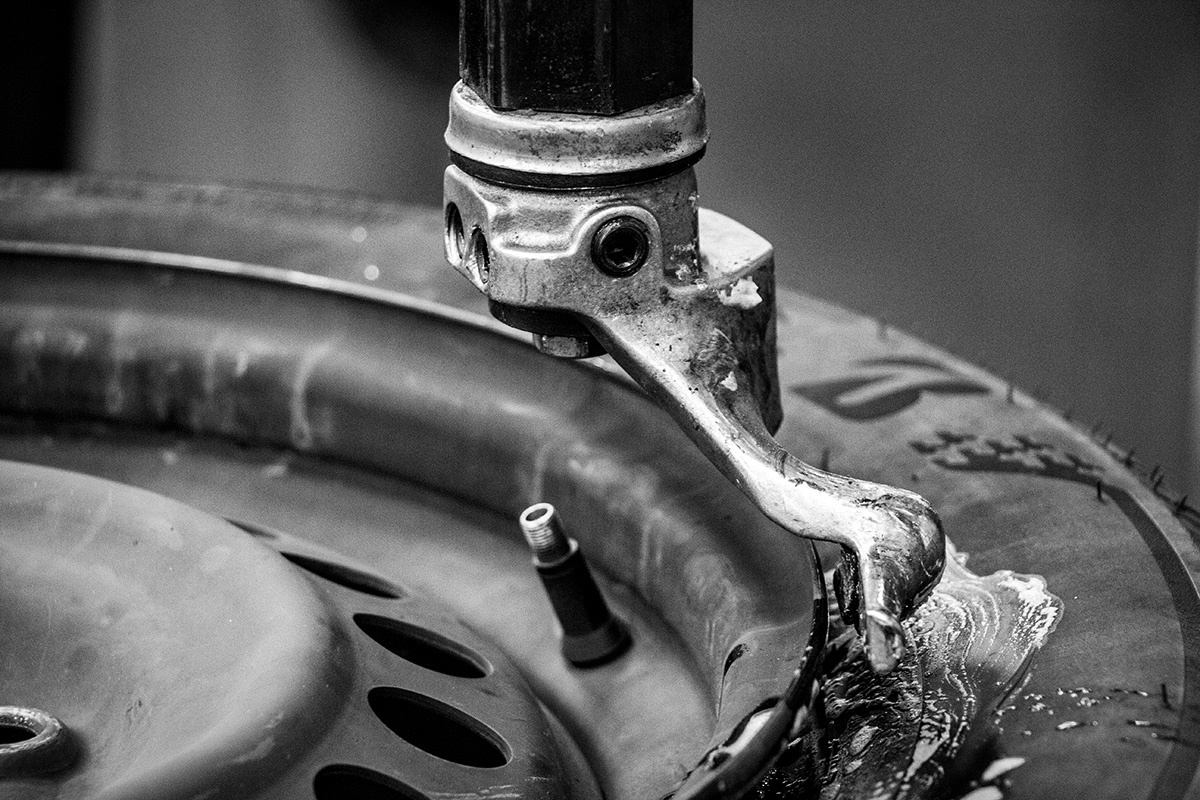
See all that tire mounting compound? Getting sloppy here also helps when trying to index the valve stem; a slippery tire can just be held while the table spins to the correct spot. Photo: Lemmy.
It’s not just you; tires are harder to mount today specifically because of those sidewalls. Especially if your shop doesn’t have the latest and greatest tire machines that have additional arms and apply force to the sidewall of the tire to keep beads in the drop center, technique is important. And to make matters worse, more and more vehicles sport gorgeous aluminum wheels (or on really fancy cars, carbon fiber ones). If you get rambunctious, you might be damaging (and thus buying) one.
In the same vein, if you haven’t played around with a bead seater, you may want to. Those rigid sidewalls make it hard to get the bead to momentarily seat on the rim of the wheel to get air to start flowing. If you’ve only ever seen the bead seater being used (often called the “Cheetah” due to the best known manufacturer of those tools), it might make sense to practice with it for a couple minutes after work one evening.
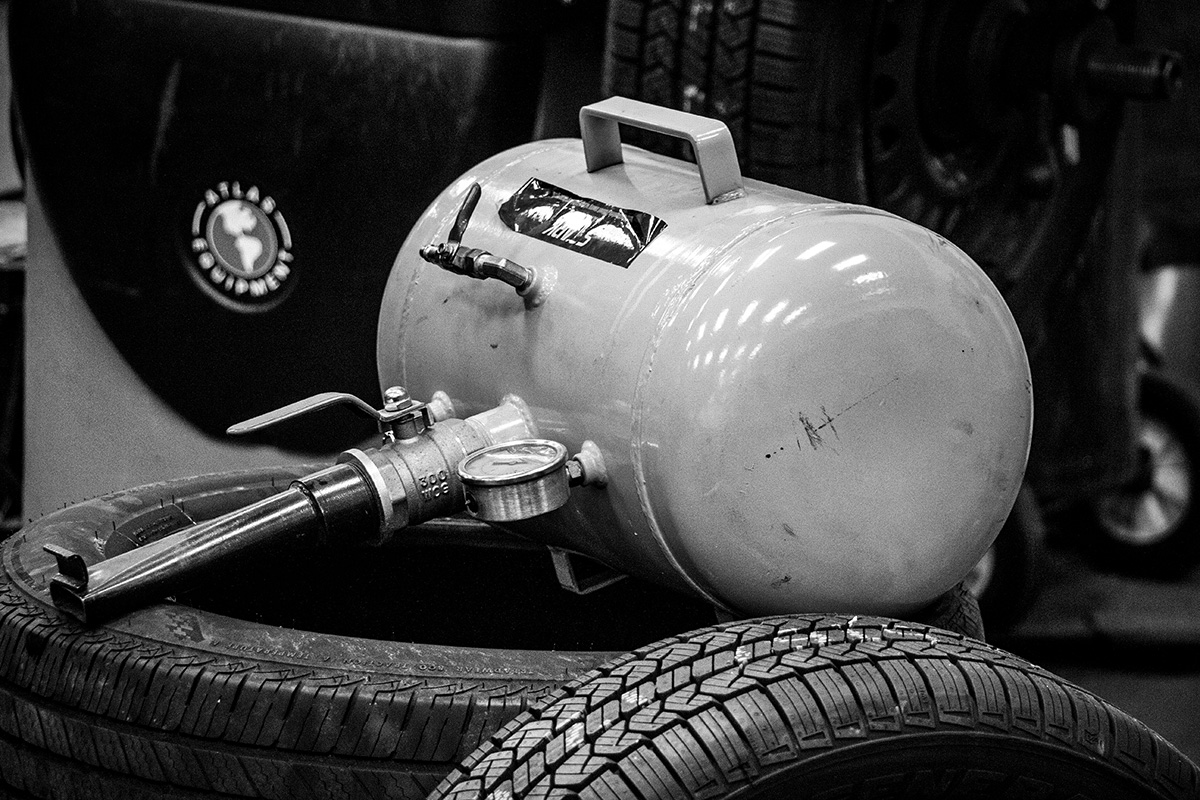
Pneumatic bead seaters are often the only thing that will get recalcitrant tires to behave. Photo: Lemmy.
Do you have a road-force balancer at your shop? If you do, get acquainted with it. More importantly, bone up on when to not use it, too—standard balancing is A-OK on most vehicles most of the time.
And you’re not supposed to install weights at multiple spots on one side of a wheel, right? Well, not anymore. Your tire tech may be hip to the latest technology, which is why you might see weights sprinkled about a wheel. Some balancers can “tell” you how to hide adhesive weights behind the spokes of an alloy wheel for a clean look. Learn how to do this on your shop’s balancer—many customers request this, and knowing how to use the tools at your disposal is the name of the game in this biz, right?
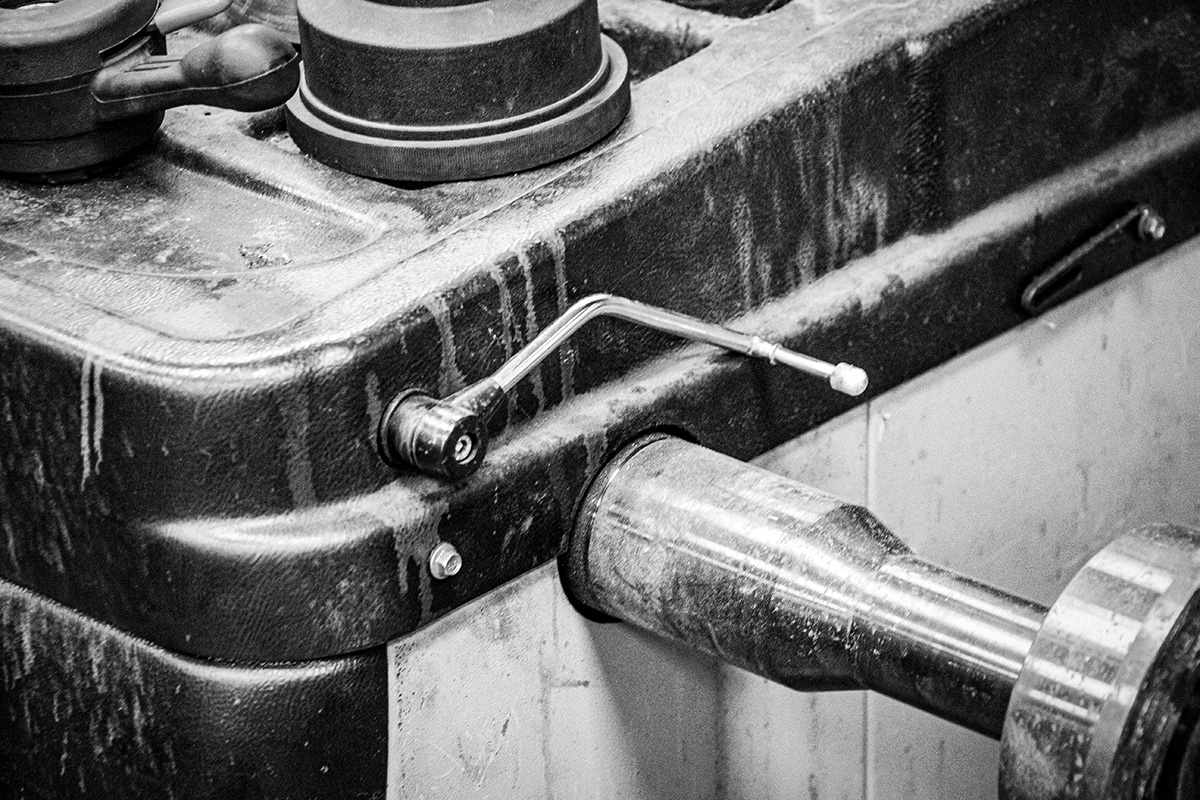
This arm on your shop’s machine might do more than ascertain the rim diameter—it might also show you how to keep unsightly sticky weights concealed. Photo: Lemmy.
Pop-pop on one bead, spin the tire, and pop-pop on the other side, right? You likely know all about TPMS, but don’t get in a big hurry when breakin’ beads like you might have earlier in your career. Keep that sensor away from the shovel. Some techs like to go 180 degrees out. I personally keep the valve at 90 degrees to the bead breaking blade for two reasons. First, some Fords use a fruitcake sensor that mounts opposed to the valve stem. Secondly, I can pop beads on one side and do that fast spin-to-get-the-other-one move I’ve been working on since I was just a sprat.
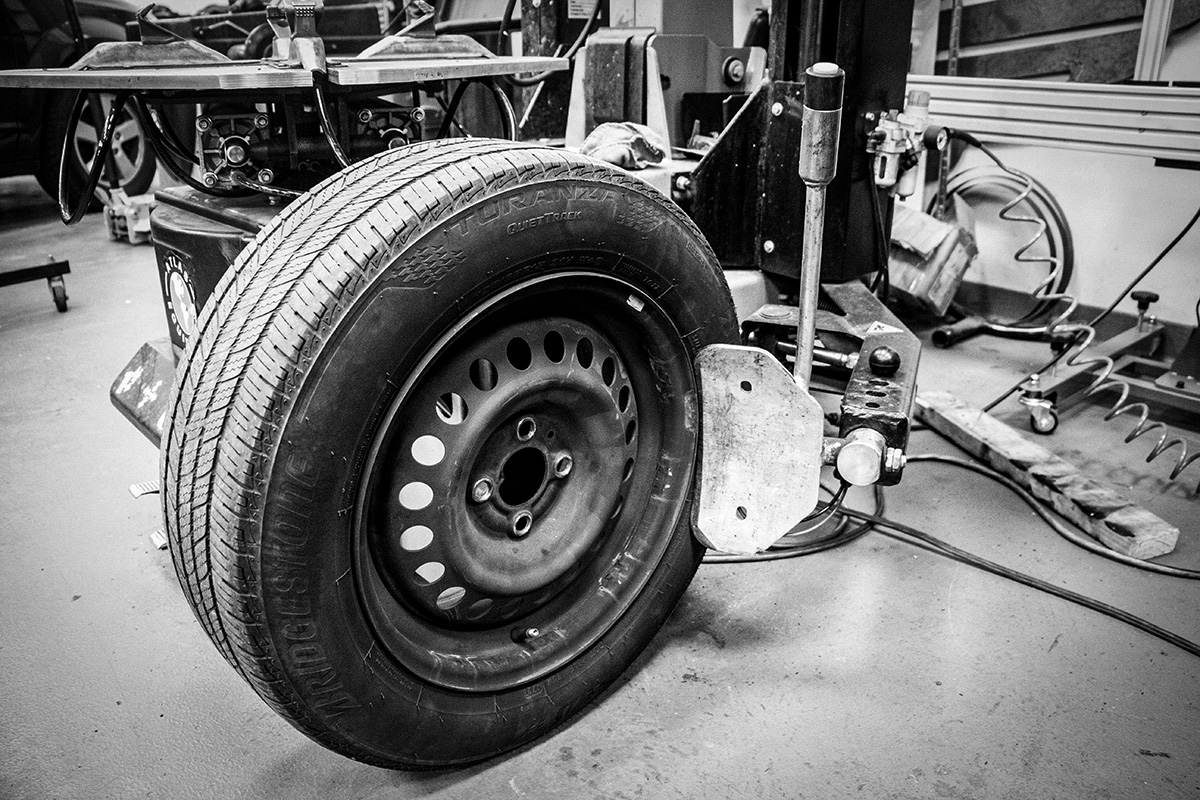
If your shop features nitrogen to fill tires, don’t forget to swap the valve caps to green ones—that’s how other shops and techs will know not to contaminate ‘em with pedestrian old air. And you better believe a customer will notice!
Speaking of things a customer will notice: remember when you started forgetting to reset oil change minder lights, and customers would call and return to the shop upset, wondering if you even changed the oil at all? Well, TPMS is similar. Indirect TPMS systems that calculate pressure from ABS sensors usually need to be reset using a button or menu in the car’s on-board computer. Direct systems that measure air in each tire without calculating or comparing to other tires may require calibration after new tires or even after a rotation to ascertain the new positions.
If your scanner is a higher-end unit, it may also give you information about the sensor’s battery level, which you can pass along to your customer (and maybe use to fatten up a lean ticket, since you’re doing tire work). Checking the function of each sensor before you begin service can help keep you from finding a bad TPMS sensor while the tires are still on—if the tire light was on for that but you mistakenly thought it was a flat, guess who’s buying that sensor?
And be aware that a steering angle fault can turn on a TPMS light, so if something just came off the alignment rack, it’s not out of the realm of possibility that a new light on the dash could be shinin’. So maybe you got something out of this article that’s not strictly about tire work.
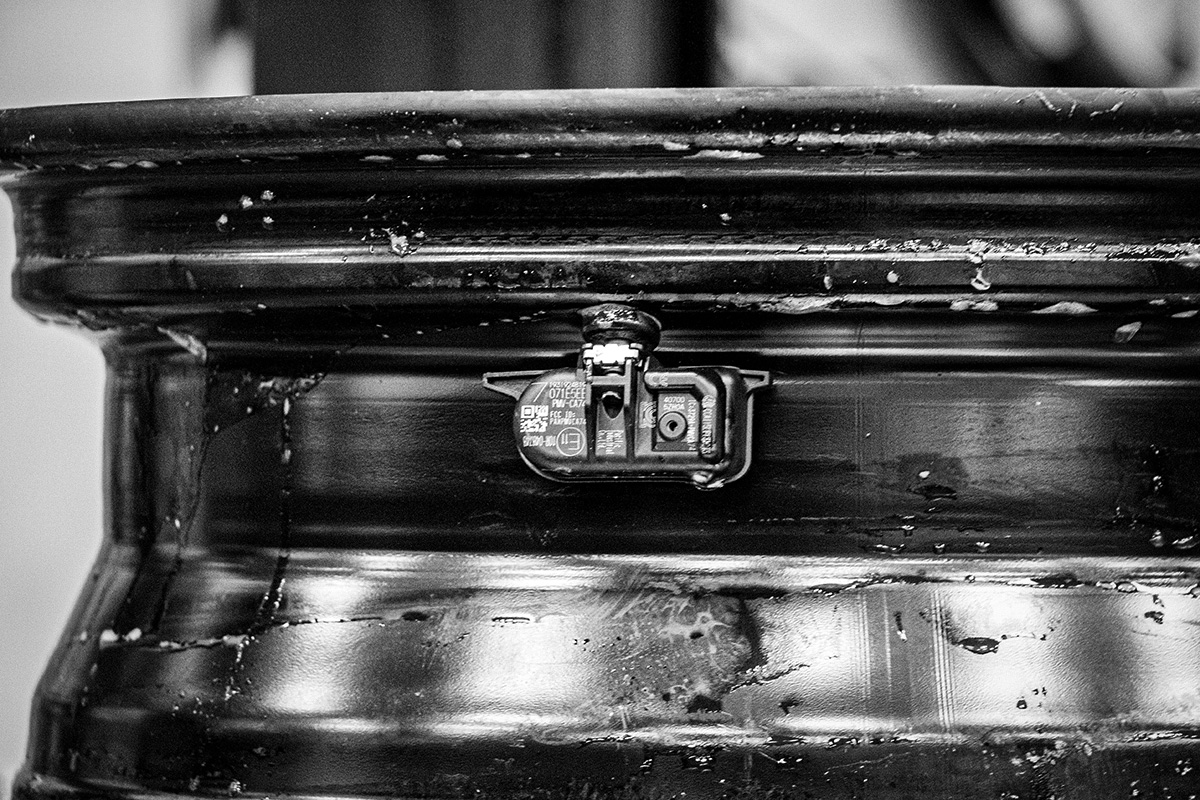
Delicate little things. Don’t get rambunctious. Photo: Lemmy.
Has that changed at your shop? I’m a “cross to the main drive axle, let the spare stay where it is” kind of fella, but if you jack up a customer’s rotation sequence, he won’t be pleased. Make sure you’re up to date on how your shop or tire tech takes care of customers if you’re filling in on a sick day. Don’t forget duallies; I think I’ve seen more confusion around those than almost any other vehicle.
Don’t let this part of your mechanical knowledge grow outdated. Knock off those cobwebs if you don’t actively perform tire work currently and go meet the friendly new faces working the lube rack!
The articles and other content contained on this site may contain links to third party websites. By clicking them, you consent to Dorman’s Website Use Agreement.
Participation in this forum is subject to Dorman’s Website Terms & Conditions. Please read our Comment Policy before commenting.